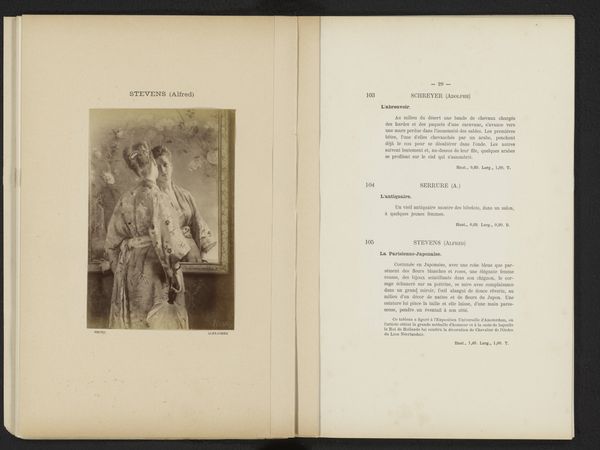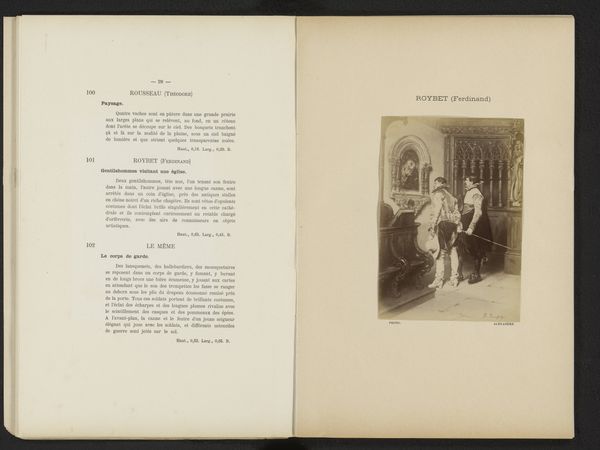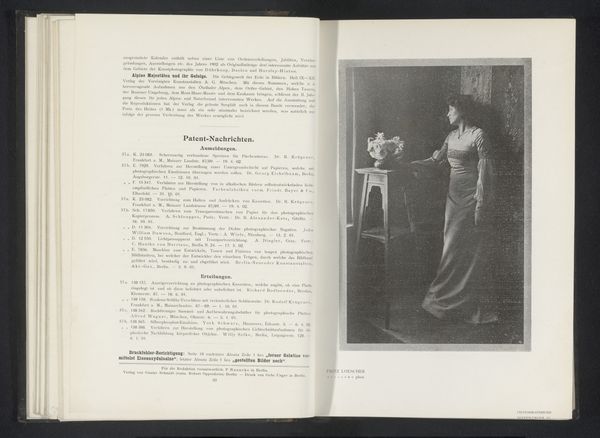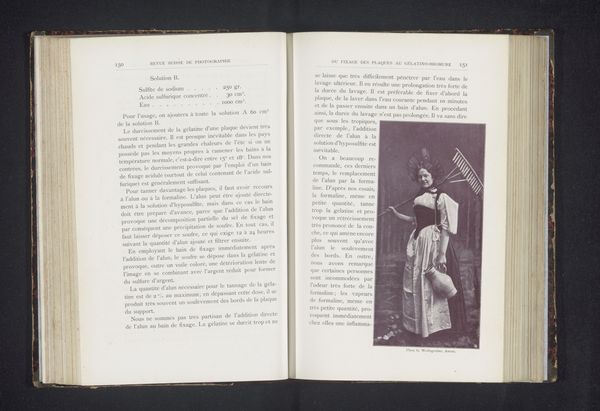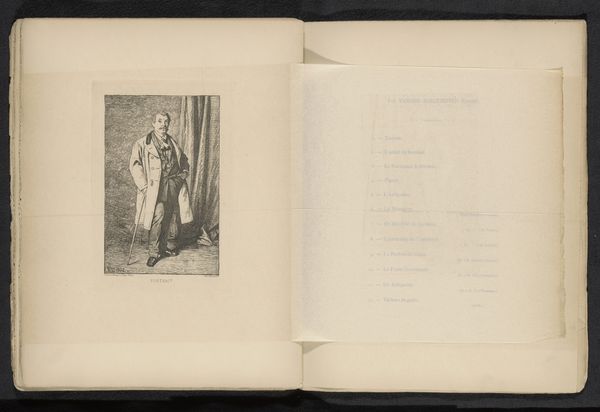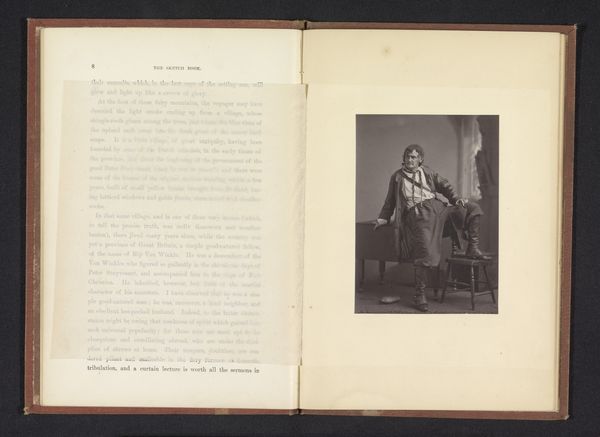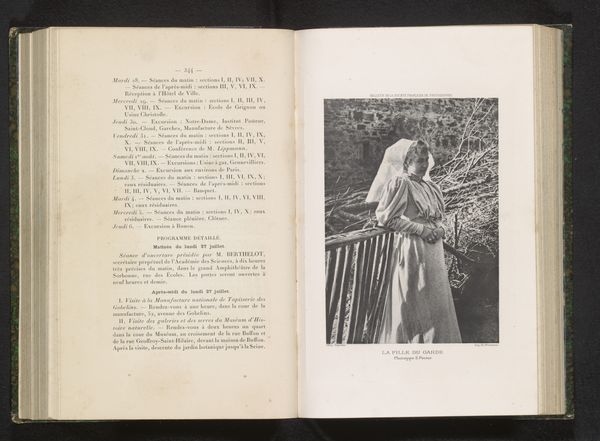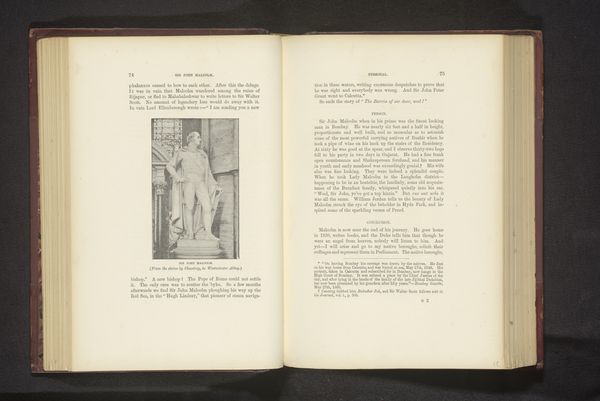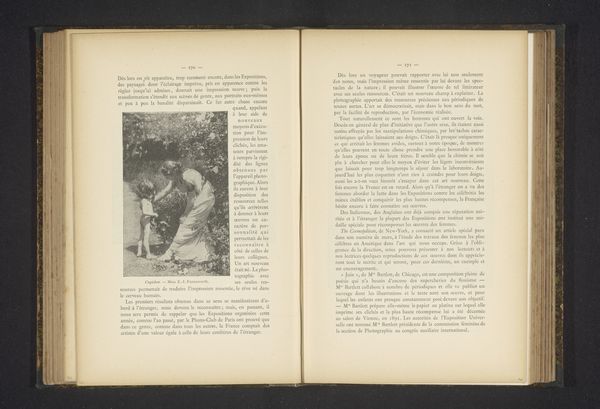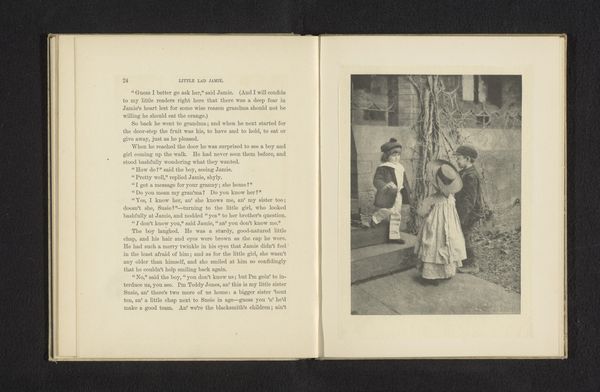
#
script typeface
#
aged paper
#
paperlike
#
editorial typography
#
child
#
journal
#
stylized text
#
thick font
#
handwritten font
#
thin font
#
historical font
Dimensions: height 164 mm, width 124 mm
Copyright: Rijks Museum: Open Domain
Editor: So, this is "Vrouw met kind in het landschap" by Hugo Erfurth, dated before 1903. It's part of an open book, so probably a photograph in a publication. The sepia tone gives it such an antiquated feel, almost like a document. What's your interpretation of the work? Curator: For me, looking at this image in its material form - as part of a bound publication – really changes how we engage with it. It ceases to be simply an artistic image and becomes a piece of commercial and industrial production. The book itself, its paper, binding, and the printing process all speak to a specific moment in the history of photographic reproduction and mass media. Do you notice how the text on the opposite page interacts with the image? Editor: Now that you mention it, yes. It’s less about just the woman and child, and more about how images circulated and were consumed at the time. The inclusion of the photograph in the publication itself becomes a statement. Almost like…art becomes another consumer product? Curator: Precisely. And what does the stylistic choice to mimic painterly techniques – what with the soft focus – tell us? Perhaps it reveals an attempt to elevate photography to the status of fine art, worthy of inclusion in such publications. Who are these photographs for? The means by which art is distributed also affect our interpretation of the art, what do you think? Editor: I hadn’t thought about it like that before. I was initially drawn to the subjects but considering it as a product of industry opens a whole new perspective. I need to be more mindful of the production next time I see something! Curator: Exactly! Recognizing how the means of production and distribution shaped the work adds layers to the interpretation. Now you can consider the forces behind even seemingly straightforward images.
Comments
No comments
Be the first to comment and join the conversation on the ultimate creative platform.
